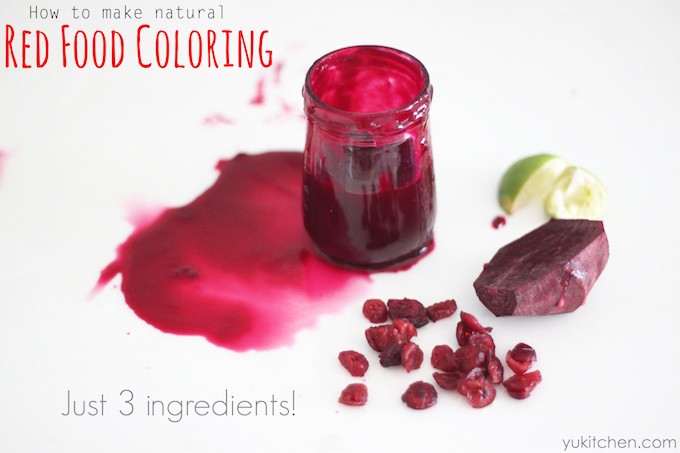Are you concerned about the artificial food coloring in today’s processed foods? Many commercially produced food dyes can pose health risks. The good news is you can easily create vibrant, all-natural red food coloring at home! This recipe uses beets, known for their intense red pigment and health benefits, combined with cranberries for added depth and natural preservation.
Beets boast a stunning red hue and are packed with essential nutrients like folate, manganese, and vitamin C. The key to maintaining a vibrant red color when using beets as a natural dye lies in acidity. Without an acidic environment, the beets can turn brown during cooking or baking. Therefore, incorporating acidic ingredients like vinegar, buttermilk, yogurt, or citrus juice (such as lime or lemon) is crucial. This recipe uses lime to keep the beetroot color gorgeously red.
DIY Natural Red Food Coloring Recipe
This simple recipe will guide you through creating your own natural red food coloring, perfect for cakes, cookies, and other culinary creations.
Yields: Approximately 1 bottle
Prep time: 15 minutes
Cook time: 10 minutes
Ingredients:
- 1 medium-sized beetroot
- 1/2 cup dried cranberries
- 1 lime (or lemon)
- 1 cup water
Equipment:
- Knife
- Cutting board
- Blender
- Fine-mesh sieve or cheesecloth
- Bottle or jar for storage
Instructions
-
Prepare the Beetroot: Peel and roughly chop the beetroot into small pieces. Beets can stain, so consider wearing gloves or washing your hands immediately after handling them.
-
Chop the Cranberries: Roughly chop the dried cranberries to help them blend more easily. If you prefer a less sweet food coloring, you can reduce the amount of cranberries or omit them altogether.
-
Blend Ingredients: Combine the chopped beetroot, cranberries, lime juice (freshly squeezed), and water in a blender. Blend on high speed for about 1 minute, or until the mixture is completely smooth.
-
Strain the Mixture: Place a fine-mesh sieve or cheesecloth-lined colander over a bowl. Pour the blended mixture into the sieve and let it strain. Use a spoon to gently press the solids to extract as much liquid as possible. This step removes any pulp and ensures a smooth, concentrated food coloring.
-
Extract Remaining Color: Use a spoon to press the mixture in the strainer to make sure no color is left behind.
-
Store the Food Coloring: Pour the strained red food coloring into a clean, airtight bottle or jar. Store it in the refrigerator for up to one month.
Tips for Success:
- Adjusting the Color: The intensity of the red color can be adjusted by using more or less beetroot. For a deeper red, you can also add a small amount of pomegranate juice.
- Controlling Sweetness: If you are sensitive to sweetness, start with a smaller amount of dried cranberries and adjust to taste. Alternatively, you can use fresh cranberries.
- Extending Shelf Life: To further extend the shelf life, you can add a teaspoon of vodka or other high-proof alcohol to the food coloring as a preservative.
- Lime Alternatives: Lemon juice or white vinegar can be used in place of lime juice.
Using Your Natural Red Food Coloring
This homemade red food coloring is perfect for a variety of applications, including:
- Cakes and Cupcakes: Add it to cake batter or frosting for a naturally vibrant red color.
- Cookies: Incorporate it into cookie dough for festive red cookies.
- Frosting and Icing: Use it to create stunning red velvet frosting or colorful icings for desserts.
- Beverages: Add a few drops to cocktails or mocktails for a beautiful red hue.
Enjoy creating delicious and visually appealing treats with this all-natural red food coloring! Remember, the color may be more subtle than artificial dyes, but the health benefits and natural flavor are well worth it.
